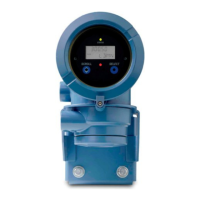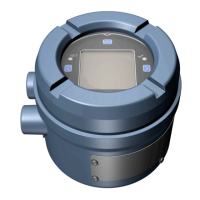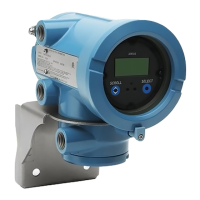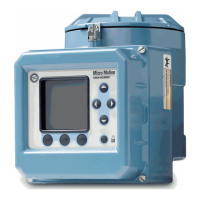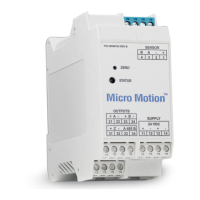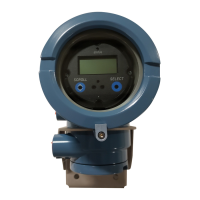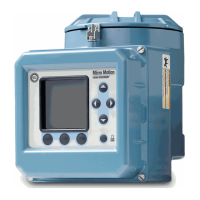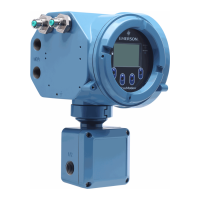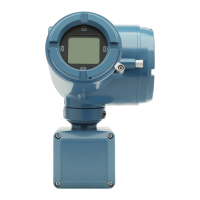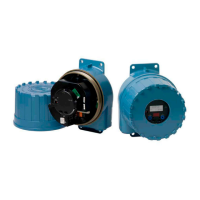Configuration and Use Manual 131
Troubleshooting
Measurement Performance TroubleshootingCustody TransferCompensation Measurement Performance TroubleshootingCustody TransferCompensation Measurement Performance TroubleshootingCustody TransferCompensation Measurement Performance TroubleshootingCustody TransferCompensation
12.6 Zero or calibration failure
If a zero or calibration procedure fails, the transmitter will send a status alarm indicating the cause of
failure. See Section 12.12 for specific remedies for status alarms indicating calibration failure.
12.7 Fault conditions
If the analog or digital outputs indicate a fault condition (by transmitting a fault indicator), determine
the exact nature of the fault by checking the status alarms with a Communicator or ProLink II
software, or the display if available on your transmitter. Once you have identified the status alarm(s)
associated with the fault condition, refer to Section 12.12.
Some fault conditions can be corrected by cycling power to the transmitter. A power cycle can clear
the following:
• Loop test
• Zero failure
• Stopped internal totalizer
(Model 1700/2700 transmitters only) After cycling power, an A107 alarm will be reported and the
status LED will be flashing. This indicates that a power reset has occurred, and is normal.
Acknowledge the alarm as described in Section 7.6.
12.8 HART output problems
HART output problems include inconsistent or unexpected behavior that does not trigger status
alarms. For example, the Communicator might show incorrect units of measure or respond sluggishly.
If you experience HART output problems, verify that the transmitter configuration is correct.
If you discover that the configuration is incorrect, change the necessary transmitter settings. See
Chapter 6 and Chapter 8 for the procedures to change the appropriate transmitter settings.
If you confirm that all the settings are correct, but the unexpected outputs continue, the transmitter or
sensor could require service. See Section 12.3.
12.9 I/O problems
If you are experiencing problems with the mA, frequency, or discrete outputs, or the discrete input,
use Table 12-2 to identify an appropriate remedy.
Table 12-2 I/O problems and remedies
Symptom Possible cause Possible remedy
No output
Loop test failed
Power supply problem Check power supply and power supply wiring.
See Section 12.14.1.
Fault condition present if fault
indicators are set to downscale or
internal zero
Check the fault indicator settings to verify
whether or not the transmitter is in a fault
condition.
If a fault condition is present, see Section 12.7.
Channel not configured for desired
output (CIO transmitters, Channel B or
C only)
Verify channel configuration for associated
output terminals.
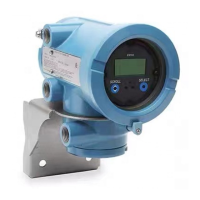
